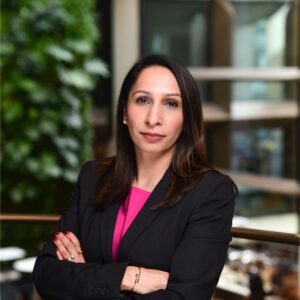T+1 post-trade settlement in Europe has the potential to be significantly more problematic than in the US due to market fragmentation, multiple trading time-zones and regulatory complexities, writes Pam Samrai, head of post-trade product for the buy-side OMS (AIM) at Bloomberg.
 Regulators are already pointing to a need for automation as a solution for mitigating the human and technological risks of navigating the complex and fragmented European market. The reason for this is in the numbers – there are 14 authorised central counterparties (CCPs), an additional 24 third country central counterparties, and 29 authorised central securities depositories (CSDs).
Regulators are already pointing to a need for automation as a solution for mitigating the human and technological risks of navigating the complex and fragmented European market. The reason for this is in the numbers – there are 14 authorised central counterparties (CCPs), an additional 24 third country central counterparties, and 29 authorised central securities depositories (CSDs).
Even with automation, demand for headcount may increase
Headcount and talent is a looming issue which European businesses preparing for T+1 are fast becoming aware of. Expectations of the transition to T+1 broadly include a level of operational strain and staffing challenges.
In the US, Bloomberg Asset and Investment Manager (AIM) data suggests two conclusions can be drawn. The first, that automation has great potential to ease this burden. Research, which covered more than 3.7 million trades over an 18-month period relating to clients using AIM’s post-trade capabilities, found that 92% of blocked trades were matched in 2 hours – speeds which would comply with T0 requirements – while 96.2% matched within T+1 timeframes. Just 0.25% matched in T+2 or longer.
The second conclusion is that, even as automated solutions were implemented, headcount rose across the board as firms bedded in T+1 processing in the run up to and following the deadline. Industry research shows that in the US 52% of businesses that underwent T+1 regulatory compliance added headcount.
In Europe, concerns about headcount are even more acute. The problem is exacerbated by the multiple timezones and operating hours of European businesses that sit in the middle of the trading day. There is already talk in the industry of the potential for implementing round-the-clock teams to enable businesses to deal with the new time pressure of post-trade settlement. In this scenario, individuals and teams could have responsibility for 24/7 monitoring with the aim of catching and resolving settlement issues immediately.
As a first step, businesses must look at their own operations and consider where automation can play a role in minimising disruption. The critical next step, which should be taken concurrently, is paying great attention to future talent requirements to manage the T+1 transition process.
Asia presents a unique counterparty problem for Europe
Where operations in Europe will have to be compliant with trades coming in from the US, which already have their own regulatory framework, Asia presents another challenge entirely, and one which will hit European operators harder than, for example, in the US.
European operations do considerably more trading business with Asia, because of shared market hours. This perk offers a potential downside. In Asia, in particular, there is a broad preference for solving capacity issues by upweighting headcount. As trading volumes increase and timeframes grow shorter, due diligence into the processing capacity of counterparties may well become a requirement. There is potential for this to become an additional capacity and headcount requirement in the interim.
This is a serious operational risk and there are early indications that businesses in Asia understand that solving it in advance is a competitive advantage – HKEX announced last month its intention to invest in better technology to aid T+1 counterparty processing.
In conclusion, while the US’ role as a front-runner in implementing T+1 has undoubtedly provided valuable lessons for European businesses undertaking the transition to T+1, any assumptions that the process can be replicated are misplaced. Europe’s fragmented market and its position at the centre of the trading day places greater emphasis on automation, talent, and counterparty risk than for the US.
Data shows that automation will be key to managing processing capacity, but it is not a silver bullet and business leaders must thread the needle very carefully in order to balance the many risks at play between now and 2027.